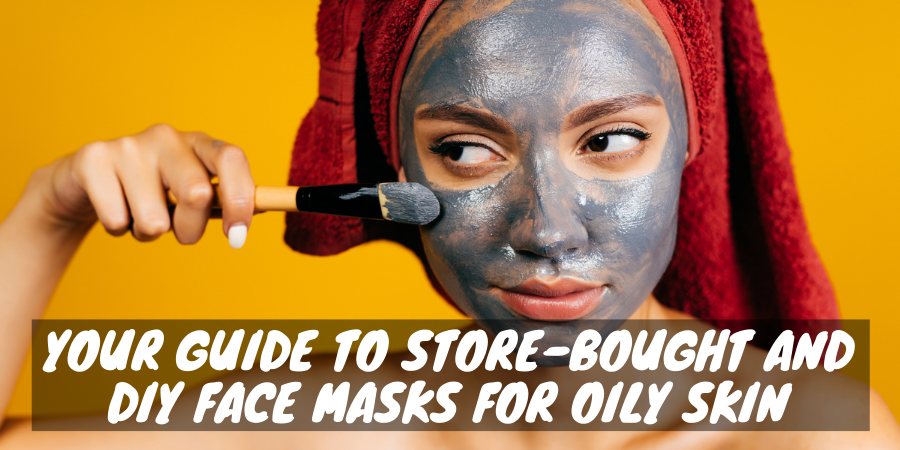Nothing says self-care like a relaxing face mask.
But if you have oily skin, you may find yourself avoiding face masks out of fear of making your skin even oilier.
After all, so many masks advertise their hydrating and moisturizing properties. And the last thing you want is to have to deal with more moisture!
But you don’t need to forego this classic beauty ritual just because you have oily skin. In fact, there are many face mask options, both store-bought and DIY, that are fantastic for those with oily skin.
Here’s what to look for in a store-bought face mask for oily skin, plus seven easy recipes for homemade face masks that will beautify your skin without setting off your oil glands!
Choosing the Best Face Mask for Oily Skin
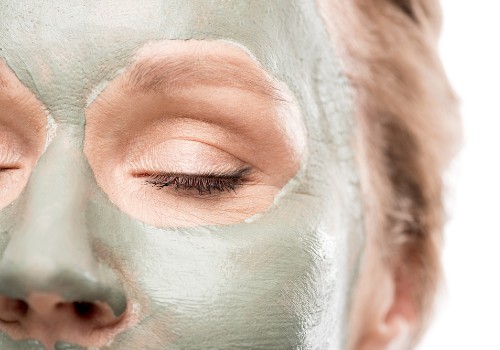
It’s easy to get overwhelmed by all the products in the skincare aisle — that is, unless you know what you’re looking for.
And when it comes to picking a face mask for oily skin, it’s all about the ingredients.
So skip the flashy claims and pretty packaging, and direct your attention to the ingredients list.
Prioritize Oil-Absorbing Ingredients…
If you’ve got oily skin, chances are that your main priority when choosing a face mask is absorbing all that extra oil.
That means you need to be on the lookout for oil-absorbing ingredients.
Kaolin and bentonite clays are two of the most common oil-controlling face mask ingredients. These natural clays lift oils and toxins from your skin, replacing them with healthy minerals straight from the earth.
Silica, which kaolin clay is based on, is another common face mask ingredient for oily skin. Like kaolin clay, it’s excellent at absorbing excess oil from your skin.
Various starches, including rice starch, aluminum starch and corn starch, are also found in many face masks. If you’ve ever used them in cooking, you know that they’re fantastic at absorbing oil.
Sulfur isn’t the nicest-smelling face mask ingredient, but it’s incredibly effective at clearing your skin of extra oil.
Other common oil-absorbing ingredients include talc, charcoal, glycolic acid, salicylic acid, parsley extract, buchu extract and niacinamide (which also calms your oil glands to prevent excess oiliness in the future).
…But Don’t Skip Moisturizing Altogether!

Controlling your oily skin with a face mask doesn’t stop with oil removal.
The oils on your skin comprise a moisture barrier that stops water from evaporating out of your skin.
When you remove these oils, your oil glands will start working overtime to replace them, often leaving you oilier than when you started — that is, unless you replenish the barrier before they get the chance.
That’s why you should use a hydrating and moisturizing mask after your oil-absorbing mask. Hydrating humectants will ensure that no skin cell is left unquenched, while moisturizing emollients will provide your skin with a healthy barrier so your oil glands can rest.
Common hydrating ingredients include hyaluronic acid and aloe extract, while common moisturizing ingredients include peptides and squalene. Other ingredients, like glycerin and panthenol, pull double duty as both humectants and emollients.
Avoid These Pore-Clogging Ingredients
There are some skincare ingredients that you simply don’t want on your oily skin, ever.
Comedogenic (pore-clogging) ingredients are found in many face masks — even ones that claim to unclog your pores. Putting them on your face will undo all the benefits of your oil-absorbing face mask, and may even make your problem worse.
Alcohols, lanolin, stearic acid, cocoa butter, sulfates, algae, carrageenan, corn oil, vegetable oil and soybean oil are all considered comedogenic ingredients. If you see any of these on the ingredients list, consider a different mask — and if you see several of them on the list, definitely avoid that mask!
Some face masks claim to be non-comedogenic on the label, but since the term isn’t regulated, comedogenic ingredients may still be present. You’ll need to do your research and check the ingredients list for yourself.
How to Use a Face Mask for Oily Skin
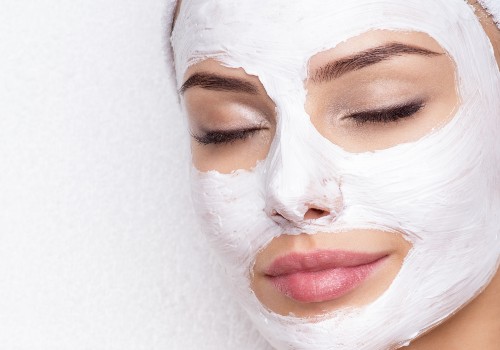
Your store-bought face mask for oily skin will include directions on how to apply the mask and how long to leave it on.
Generally, you’ll apply the mask to your clean face with clean fingertips, then leave it on for 10 to 20 minutes while it works its magic. You’ll then peel or rinse the mask off, revealing your new oil-free complexion.
The face mask label will also tell you how often you should be using the mask. If you have oily skin, you’re typically able to use your face mask more often than directed — say, three times a week instead of two.
But if your skin is sensitive, err on the side of caution and use the mask less frequently, leaving it on for less time. If your face mask irritates your skin, your oil production could increase in response, making your skin worse off than it was when you started.
The Most Effective DIY Facial Masks for Oily Skin
If you’re having trouble sourcing a store-bought face mask, or if you prefer to go natural, try one of these recipes for homemade face masks for oily skin.
Whenever possible, use organic ingredients to avoid getting traces of mysterious fertilizers, pesticides and other chemicals on your skin.
Apple Cider Vinegar Face Mask
Apple cider vinegar is one of the buzziest natural skincare ingredients out there.
It balances your skin’s pH, kills harmful bacteria, removes dead skin cells, unclogs pores and absorbs excess oil. In other words, it does it all.
To make your own apple cider vinegar face mask, combine 1 teaspoon of apple cider vinegar with 1 teaspoon of baking soda and 2 teaspoons of raw honey.
Mix it up into a paste and apply it evenly to your face. Avoid getting it on your eyebrows as it may damage or pluck the hairs when removed.
Leave the mask on for 10 to 15 minutes, then rinse it off with lukewarm water. Repeat the process twice a week to keep your skin balanced and bright.
Banana Face Mask
Bananas aren’t just tasty — they’re surprisingly good at absorbing oil from your skin.
When combined with lemon juice to clear out your pores and honey to restore your moisture barrier, they make an incredible all-in-one face mask for oily skin.
Mash a ripe banana, then mix it with 1 tablespoon of honey and half a teaspoon of lemon juice. Apply the mask to your clean face, leave it on for up to 15 minutes, then rinse it off.
This mask can be used up to three times a week. If you have sensitive skin, use it once a week to avoid irritation from the lemon juice.
Egg White Face Mask
Egg whites contain a protein called albumin that helps the egg white retain its structure.
Albumin has a similar effect on the skin, firming it up and shrinking enlarged pores. This makes it great for those with oily skin.
To make the mask, mix 1 egg white with the juice of half a lemon. Whisk the mixture thoroughly, then apply it to your face for 10 minutes before rinsing with lukewarm water.
You can use the mask two or three times a week to make your oily skin look fresh and healthy. Bonus: you can use those extra egg yolks to make bread, cookies and other baked goods more tender, velvety and rich.
Clay and Witch Hazel Face Mask
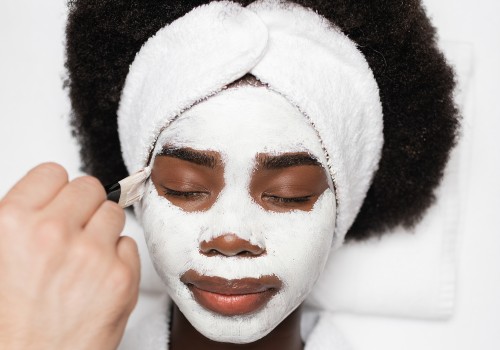
As mentioned before, clay is a miracle cure for oily, greasy skin. But you don’t have to go to a spa or the beauty supply store to get a clay mask.
You can purchase pure bentonite clay powder from a vitamin store, natural foods store or apothecary.
Combine 1 teaspoon of the clay powder with 1 tablespoon of witch hazel, which shrinks your pores and balances your pH. You can also add one or two drops of lemon, rosemary or lavender essential oil to add a pleasant scent to your mask.
It’s important to make the mask in a glass, plastic or wood bowl with a non-metal utensil. Clay’s chemistry changes when it comes in contact with metal, reducing its ability to draw out toxins.
Apply the mask for up to 10 minutes or until it’s just barely dry, then rinse it off with lukewarm water. If your skin is very oily, you can leave it on for 20 minutes, but you may need to rinse with warm water if the mask has completely dried.
Orange Peel Powder Face Mask
Don’t toss those orange peels in the trash or compost!
Instead, turn them into a luxurious face mask that controls acne, renews your skin cells and protects your skin from sun damage.
To make orange peel powder, remove the white fibers from your orange peels, then rinse the peels in warm water. Lay them out on a baking sheet in a sunny area until they’re thoroughly dried, which could take anywhere from 1 to 5 days.
Once the peels are dry, crush them into a powder with a blender, food processor or mortar and pestle. Store the powder in an airtight container.
When you’re ready to make the mask, mix 2 teaspoons of orange peel powder with 1 teaspoon each of baking soda and oatmeal. The baking soda gives your skin a deep clean, while the oatmeal exfoliates and soothes your skin.
Then add water little by little until you’ve formed a spreadable paste. Apply the paste to your face for 15 minutes, then rinse with cold water.
Turmeric Face Mask
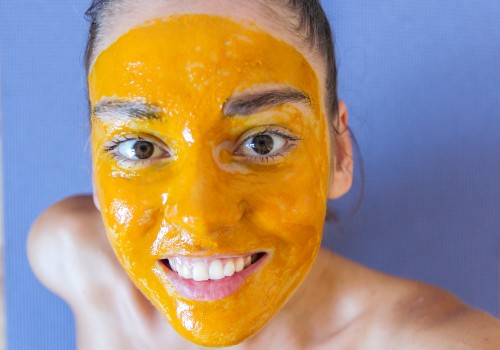
Who knew that your spice rack held the secret to clear, oil-free skin?
Turmeric is a powerful anti-inflammatory and antioxidant that brightens your skin, promotes collagen production and calms overactive oil glands.
Make a turmeric face mask by combining 1 tablespoon of raw honey with 1 teaspoon of turmeric and 5 drops of lemon juice. Apply it to your face for 15 minutes, then rinse it off with lukewarm water.
Turmeric’s rich color can sometimes transfer to your skin while you’re using the mask. If this occurs, you can remove the pigment with a toner or makeup removal wipe.
Charcoal and Aloe Face Mask
Charcoal is well-known for its ability to remove toxins from the body. And it does the same thing to your skin.
Extra oil, dirt, heavy metals and other impurities are no match for charcoal. Combine it with hydrating, vitamin-rich aloe vera and you’ve got yourself a powerful oil-controlling face mask.
You’ll need activated charcoal powder to make this mask. You can find it at drugstores, supplement stores and natural food stores.
To make the mask, combine 1 teaspoon each of activated charcoal powder, aloe vera gel and water. You can add a drop or two of tea tree, lemon, lavender or clove oil to impart a pleasant scent to your mask.
Apply the mask and wait for it to dry, which could take up to 20 minutes. Rinse with warm water and repeat the application twice a week.

